Greater Painted-Snipe
Posted: Wed Jan 02, 2013 10:08 am
242. Greater Painted-Snipe Rostratula benghalensis (Goudsnip)
Order: Charadriiformes. Family: Rostratulidae
Description
Size 23-26 cm. A medium-sized, attractive water bird, the Greater Painted-snipe is unusual amongst birds because the female is larger and more brightly coloured than the male.
Female is larger and more striking than male, with a white eye patch, which contrasts the dark red-brown head and chestnut neck. The upperparts are dark bronze-green with fine black barring and the wings are dark grey, white and gold.
The male greater painted-snipe has a conspicuous golden eye patch that sits in stark contrast with the grey-brown head, ash-grey neck, and white streaked throat. The upperparts and wings are gold, brown and black, a golden “V” streaks the male’s back, and the underparts are white.
Both sexes have a conspicuous pale harness extending upwards from the breast and a long, slightly downward-curving bill, which is superbly adapted for probing for prey in water and mud, and have long legs with partially webbed feet, an adaptation for walking in water and on muddy ground.
The juvenile resembles the male.
Similar species: Male distinguished from African Snipe and Great Snipe by its breast pattern, longer legs, and shorter, slightly decurved pale bill. It has a laboured flight action on broad wings.
Distribution
The Greater Painted-snipe occurs from Africa and Madagascar, eastwards to Pakistan, north-eastern China, south-eastern Russia, and south-east Asia. In southern Africa it is rare to locally fairly common in Zimbabwe, northern and eastern Botswana, Namibia (Etosha, Kunene River estuary, Caprivi, central and northern Namibia.) and isolated patches of Mozambique and South Africa.
Habitat
Skulks among reeds in marshes and on the edges of lakes, vleis, dams and seasonally inundated ponds and river flood plains.
Movements and migrations
Little known, although it is generally most abundant in southern Africa in summer, from December-March, while it is most common in the Sahel in the period from July-August. This suggests that it migrates north to avoid the dry season.
Diet
Despite feeding mainly on invertebrates such as insects, snails and earthworms, the greater painted-snipe is omnivorous and will also eat seeds, rice and a variety of grasses. Food is found by probing its long bill into soft mud or by searching underwater, making side to side head movements until it makes contact with, and grasps prey with its sensitive bill. Although primarily crepuscular, the greater painted-snipe occasionally forages at night.
Breeding
Serially polyandrous, as each female mates with 2-4 males per breeding season, although only one male at any one time helps with incubation and the care of the chicks. The nest is a slight depression in vegetation, concealed by overhanging sedges or grasses; it rarely uses a scrape in open mud flats instead. Egg-laying season is from about July-April, peaking from September-March. The female lays 2-5 eggs, which are incubated solely by the male for about 15-19 days, although the female occasionally helps out. The chicks leave the nest about 12 hours after they hatch, sticking close to the male, who provides them with food for at least the first 10 days (at which point they start to forage for themselves). The male may also perform distraction displays if a predator approaches. They fledge at about 30-35 days old, remaining with the male for another 1-2 months.
Status
Scarce resident, with local movements. The Greater Painted-snipe is classified as Least Concern (LC) on the IUCN Red List.
Call
Male utters a trill; female gives a distinctive, soft, disyllabic wuk-oooooo, repeated monotonously, often after dark. Listen to Bird Call.
Order: Charadriiformes. Family: Rostratulidae
Description
Size 23-26 cm. A medium-sized, attractive water bird, the Greater Painted-snipe is unusual amongst birds because the female is larger and more brightly coloured than the male.
Female is larger and more striking than male, with a white eye patch, which contrasts the dark red-brown head and chestnut neck. The upperparts are dark bronze-green with fine black barring and the wings are dark grey, white and gold.
The male greater painted-snipe has a conspicuous golden eye patch that sits in stark contrast with the grey-brown head, ash-grey neck, and white streaked throat. The upperparts and wings are gold, brown and black, a golden “V” streaks the male’s back, and the underparts are white.
Both sexes have a conspicuous pale harness extending upwards from the breast and a long, slightly downward-curving bill, which is superbly adapted for probing for prey in water and mud, and have long legs with partially webbed feet, an adaptation for walking in water and on muddy ground.
The juvenile resembles the male.
Similar species: Male distinguished from African Snipe and Great Snipe by its breast pattern, longer legs, and shorter, slightly decurved pale bill. It has a laboured flight action on broad wings.
Distribution
The Greater Painted-snipe occurs from Africa and Madagascar, eastwards to Pakistan, north-eastern China, south-eastern Russia, and south-east Asia. In southern Africa it is rare to locally fairly common in Zimbabwe, northern and eastern Botswana, Namibia (Etosha, Kunene River estuary, Caprivi, central and northern Namibia.) and isolated patches of Mozambique and South Africa.
Habitat
Skulks among reeds in marshes and on the edges of lakes, vleis, dams and seasonally inundated ponds and river flood plains.
Movements and migrations
Little known, although it is generally most abundant in southern Africa in summer, from December-March, while it is most common in the Sahel in the period from July-August. This suggests that it migrates north to avoid the dry season.
Diet
Despite feeding mainly on invertebrates such as insects, snails and earthworms, the greater painted-snipe is omnivorous and will also eat seeds, rice and a variety of grasses. Food is found by probing its long bill into soft mud or by searching underwater, making side to side head movements until it makes contact with, and grasps prey with its sensitive bill. Although primarily crepuscular, the greater painted-snipe occasionally forages at night.
Breeding
Serially polyandrous, as each female mates with 2-4 males per breeding season, although only one male at any one time helps with incubation and the care of the chicks. The nest is a slight depression in vegetation, concealed by overhanging sedges or grasses; it rarely uses a scrape in open mud flats instead. Egg-laying season is from about July-April, peaking from September-March. The female lays 2-5 eggs, which are incubated solely by the male for about 15-19 days, although the female occasionally helps out. The chicks leave the nest about 12 hours after they hatch, sticking close to the male, who provides them with food for at least the first 10 days (at which point they start to forage for themselves). The male may also perform distraction displays if a predator approaches. They fledge at about 30-35 days old, remaining with the male for another 1-2 months.
Status
Scarce resident, with local movements. The Greater Painted-snipe is classified as Least Concern (LC) on the IUCN Red List.
Call
Male utters a trill; female gives a distinctive, soft, disyllabic wuk-oooooo, repeated monotonously, often after dark. Listen to Bird Call.
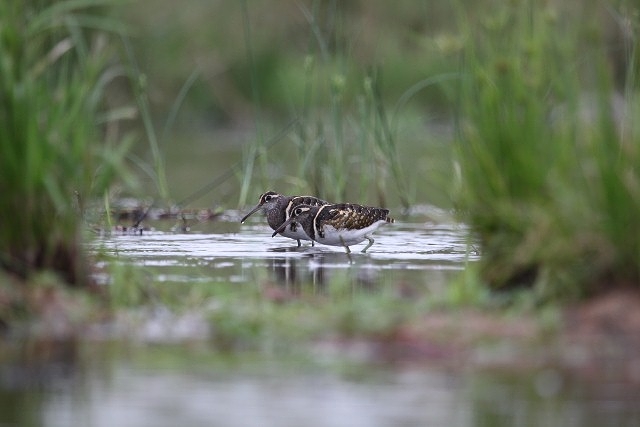 © nan
© nan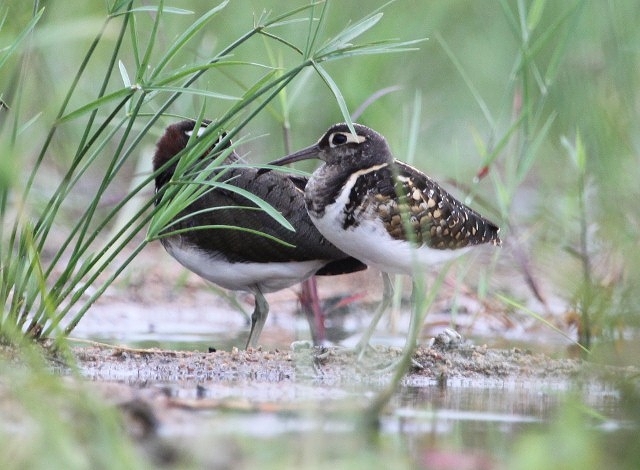 © nan
© nan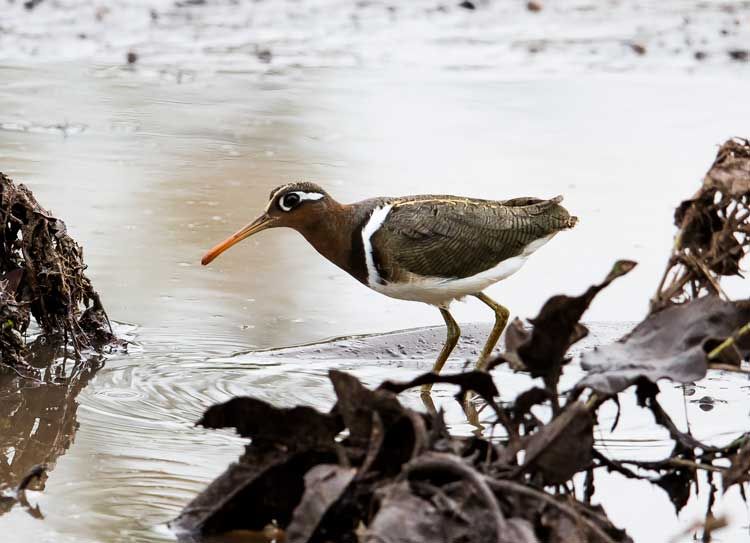 © Pumbaa
© Pumbaa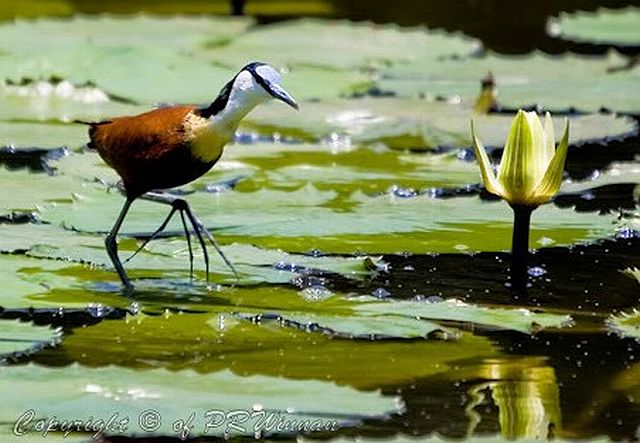
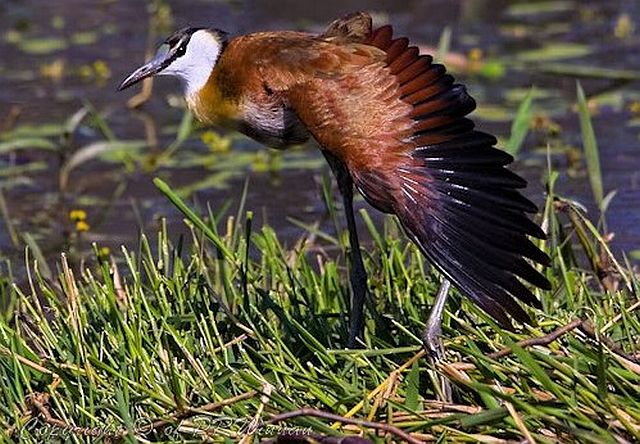
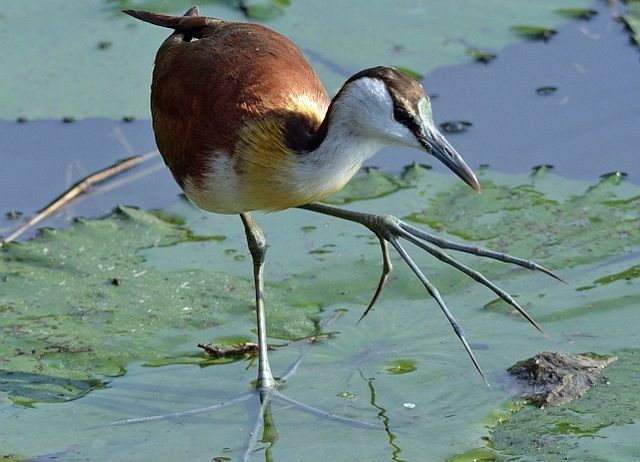 © BluTuna
© BluTuna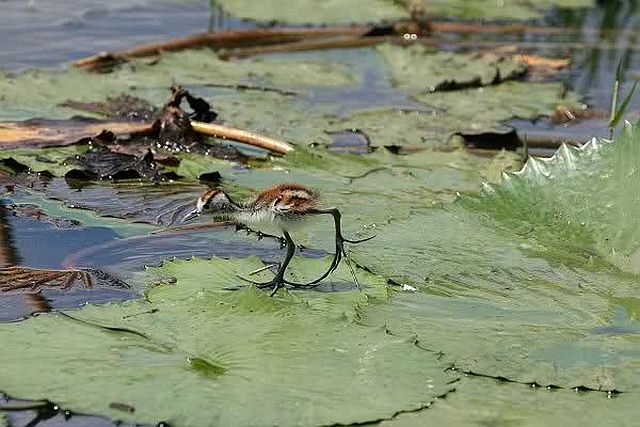 © nan
© nan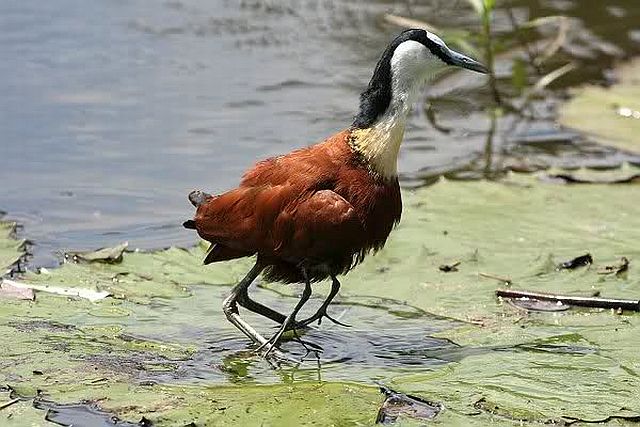 © nan
© nan